Celebrate 10 Years with Scribe!
by Natalie Bencivenga
October 16, 2021
There is something so romantic and personal about a handwritten thank-you note, a personalized letter or a printed invitation to a special event. When I was planning my wedding back in 2018, finding the right invite became (almost!) as important as the perfect gown. And I was lucky. On a little side street in Shadyside, Scribe has had all of your stationery needs taken care of — with a focus on sustainability.
I chatted with Sara Hargreaves, Proprietor, about what makes her shop such a destination. A Pennsylvania native who has made Pittsburgh her home for the last twenty years, she put her love of paper ephemera, handwriting and gift wrap into Scribe in 2011.
“As an avid gardener, cook, antique collector and art enthusiast, I constantly strive to bring a unique combination of taste and expertise to the fine paper industry,” she said. A lover of beautiful things, Hargreaves wanted a small boutique featuring foil embossed boxed products by Paula Skene Designs of San Francisco, for example. “I got the proverbial kick in the butt, and the enticement to focus on trendy letterpress from my son,” she added.
What can people expect when they explore Scribe? “Scribe offers products from more than a dozen of the country's finest letterpress, stationery and print designers, including Julie Holcomb Printers, Arzberger Engravers and Rifle Paper Co. Scribe serves as a leading source of fine stationery, letterpress, custom invitations and correspondence - and hosts events and programming aimed at increasing the awareness and value of printed communications throughout the community. In addition to our paper products, Scribe offers exquisite gift wrapping, penmanship and design services. Our boutique space is also a destination for educational experiences as well - anything from woodcut exhibitions to lectures on etiquette.”
Speaking of etiquette, Is letter writing a lost art? “Absolutely not. Just spend a day with me. I have paper, letterpress, penmanship and calligraphy aficionados from all walks of life. There is a definite uptick in letter writing and ‘pen pal’ correspondence recently. Calligraphy was on the rise previously because cursive is no longer taught in most schools. In fact Pittsburgh, Pennsylvania has a very strong Calligraphy Guild due in part to Carnegie Mellon University School of Design.”
Why are personalized, crafted invites still so important to setting the tone of an event?“Expressing the mood and inspiration for an event are very important. There are meanings hidden within the lines of text as well as the presentation of formality or informality. In fact, for example in some cultures, the Wedding Invitation is considered an official document, and must not be destroyed.”
How can this product be eco-friendly? Reprinted from Julie Holcomb Printers: [Julie Holcomb Printers has been recognized as an environmental leader by the Bay Area Green Business Program. This certification requires site visits to confirm compliance with all California environmental regulations — the strictest in the nation — as well as significant additional voluntary measures to conserve water and energy, minimize waste, recycle and reuse materials, and eliminate pollution.]
“Commercial printers make efforts to conserve water, energy and materials. For personal safety and the benefit of the environment, they use the least toxic materials and processes and dispose of all waste safely and responsibly.
“For example, our premier commercial printer uses paper that is tree-free, made from cotton linters, the residue of fine fuzz that remains on the seeds after cotton is ginned for textile manufacture. Ginning removes the long fibers which are used to spin thread that is woven into fabric, and leaves the short fibers of the linters, which have other uses in addition to papermaking. Our cotton paper is made from an agricultural byproduct; it does not increase the amount of land under cultivation for cotton. Her envelopes are made from recycled paper (30% post-consumer waste) that is manufactured using non-polluting, wind-generated electricity, certified by Green-e®, the nation's leading independent certification and verification program for renewable energy products. It is processed without the use of elemental chlorine.”
Why is it important to be eco-friendly?“Paper made from cotton and linen fabric scraps was the norm until the Industrial Revolution, and it was not until 1867 that the first paper mill in America using ground wood was established for making inexpensive newsprint. Rags continued to be collected for high-quality paper making well into the last century, but the use of chemical dyes in fabrics and the introduction of synthetic materials into most textiles made the use of "post-consumer" rags unworkable, especially for the production of white paper. Cotton paper is now made from cotton linters, or sometimes from "pre-consumer" recycled fabric recovered from textile manufacturers.
“Paper made from wood is much cheaper than cotton paper, even using cotton from agricultural residues rather than recycled rags, but the environmental cost of using virgin wood for paper is high. Cotton is 100% cellulose, and it's already white. Wood must be chemically processed to remove lignins and resins, and then bleached to yield cellulose usable for paper making. Responsible papermakers are now using recycled fibers, alternative vegetable fiber sources, and virgin wood pulp only from approved sources, and processing it without the release of toxic substances into our air or waterways.
Talk about the inks used. “For example, with the letterpress process printers use very little ink. A typical wedding invitation order uses only about one teaspoon to one tablespoon of petroleum-based ink. Using petroleum-based inks is no less toxic than soy-based inks, which were designed for offset printing. Offset printing consumes large amounts of ink especially in the production of newspapers, books and magazines. Although soy is a renewable source of oil, it is cultivated in a pesticide- and herbicide-intensive manner and many areas of the world are currently being deforested to prepare for its cultivation. Soy-based inks must be disposed of as toxic waste in the same way as petroleum-based inks.”
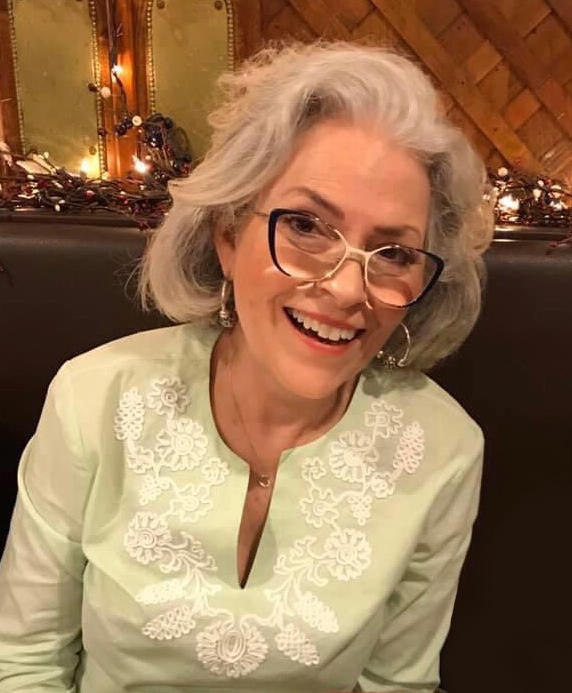
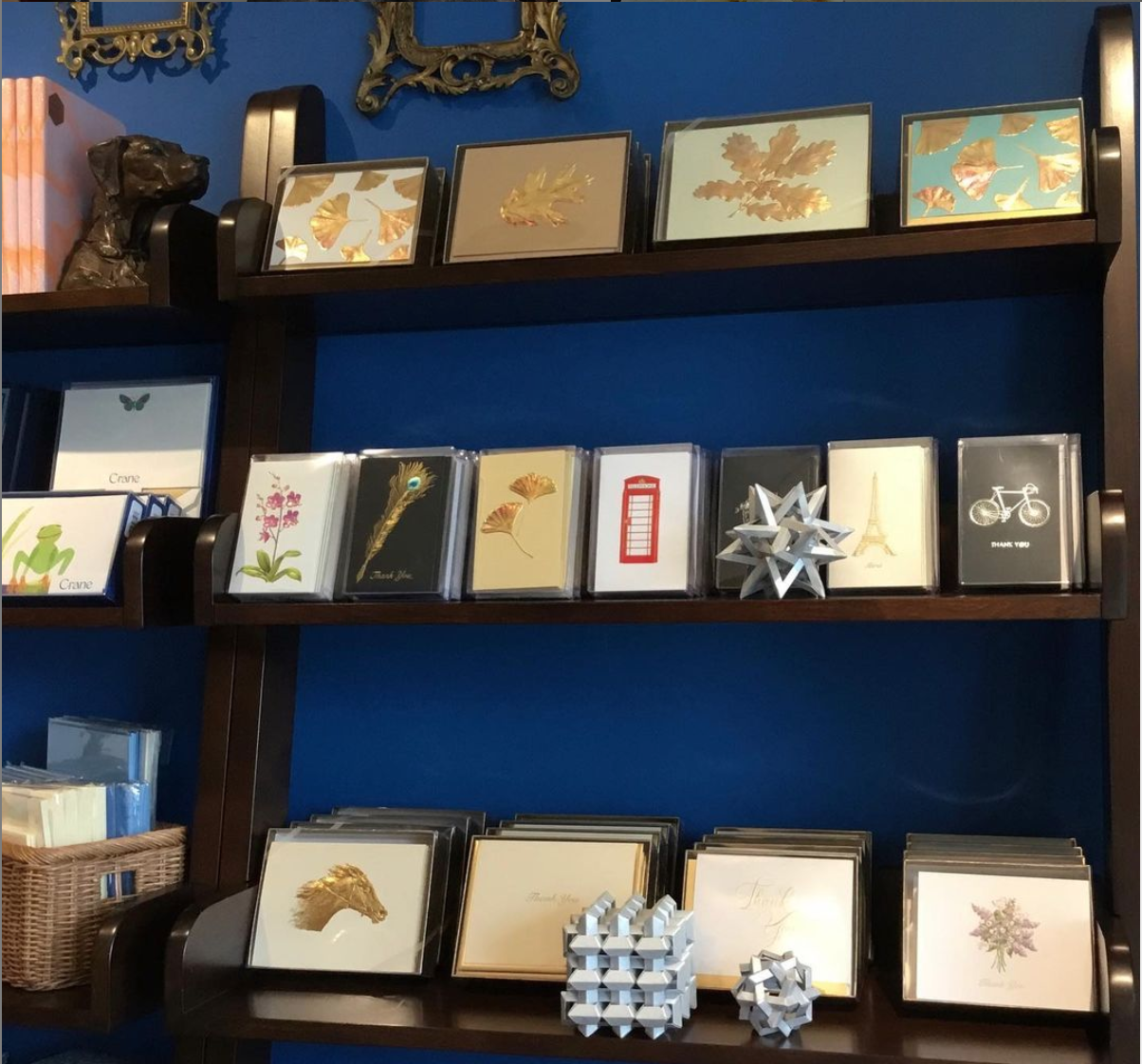
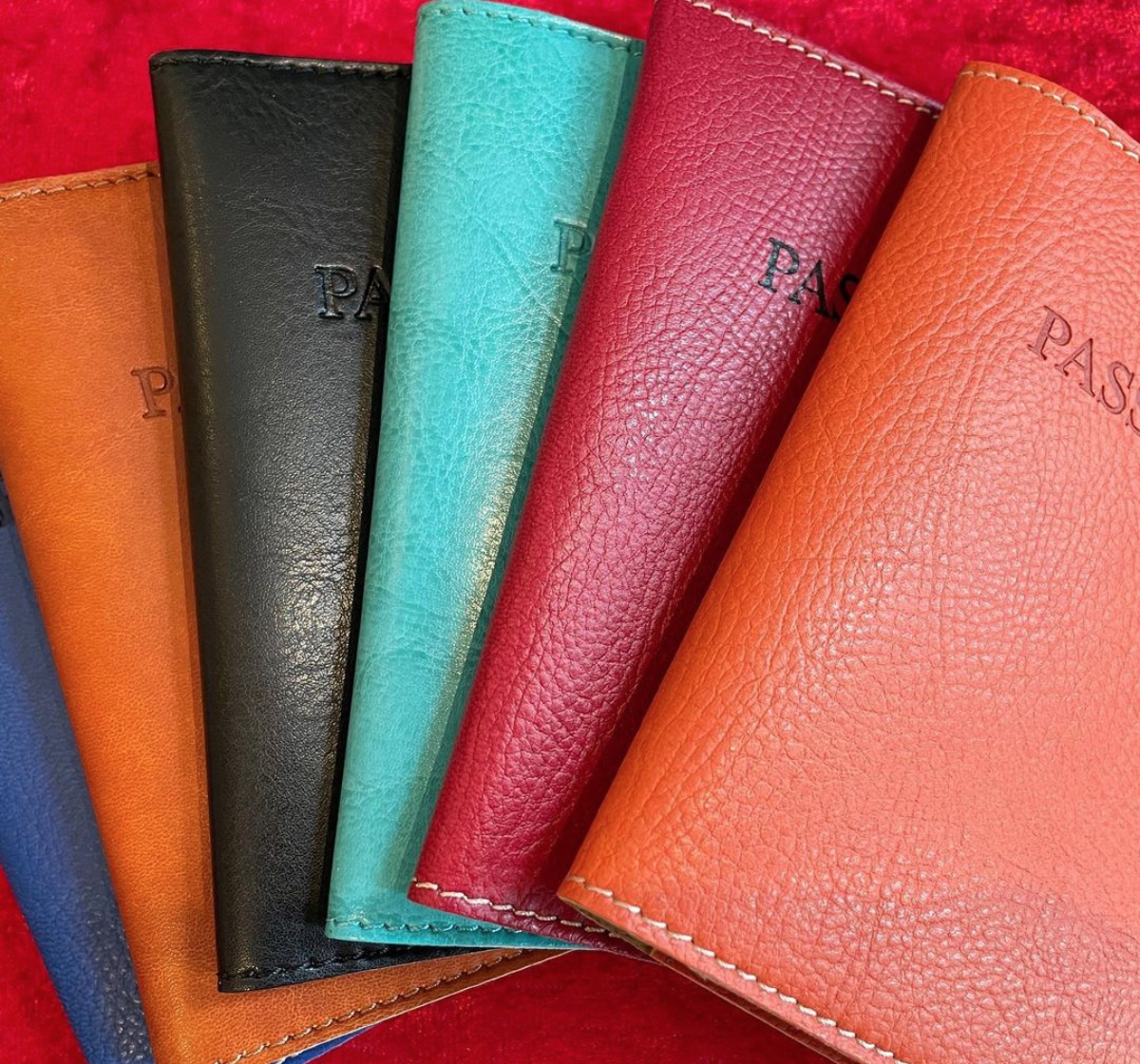
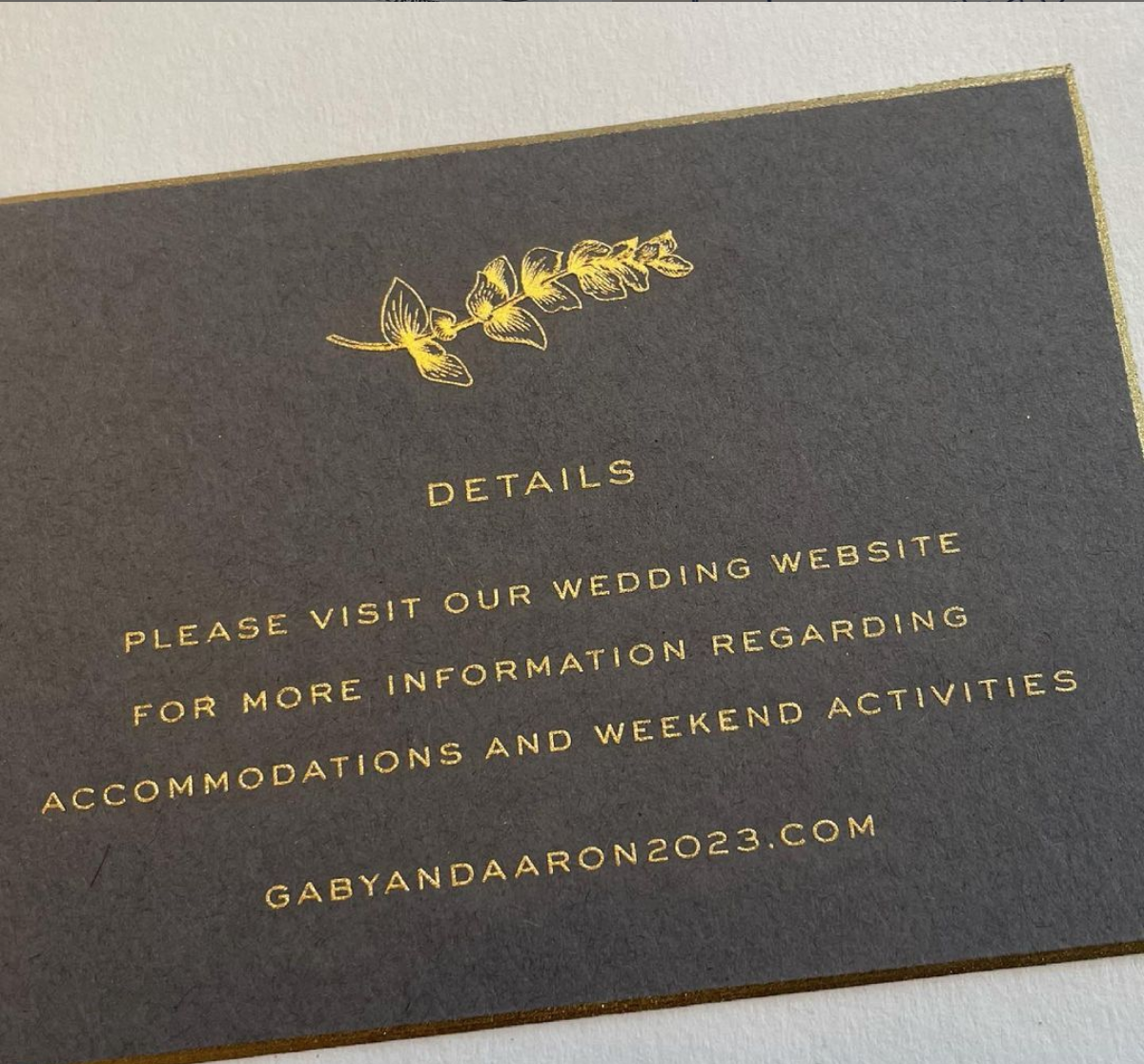
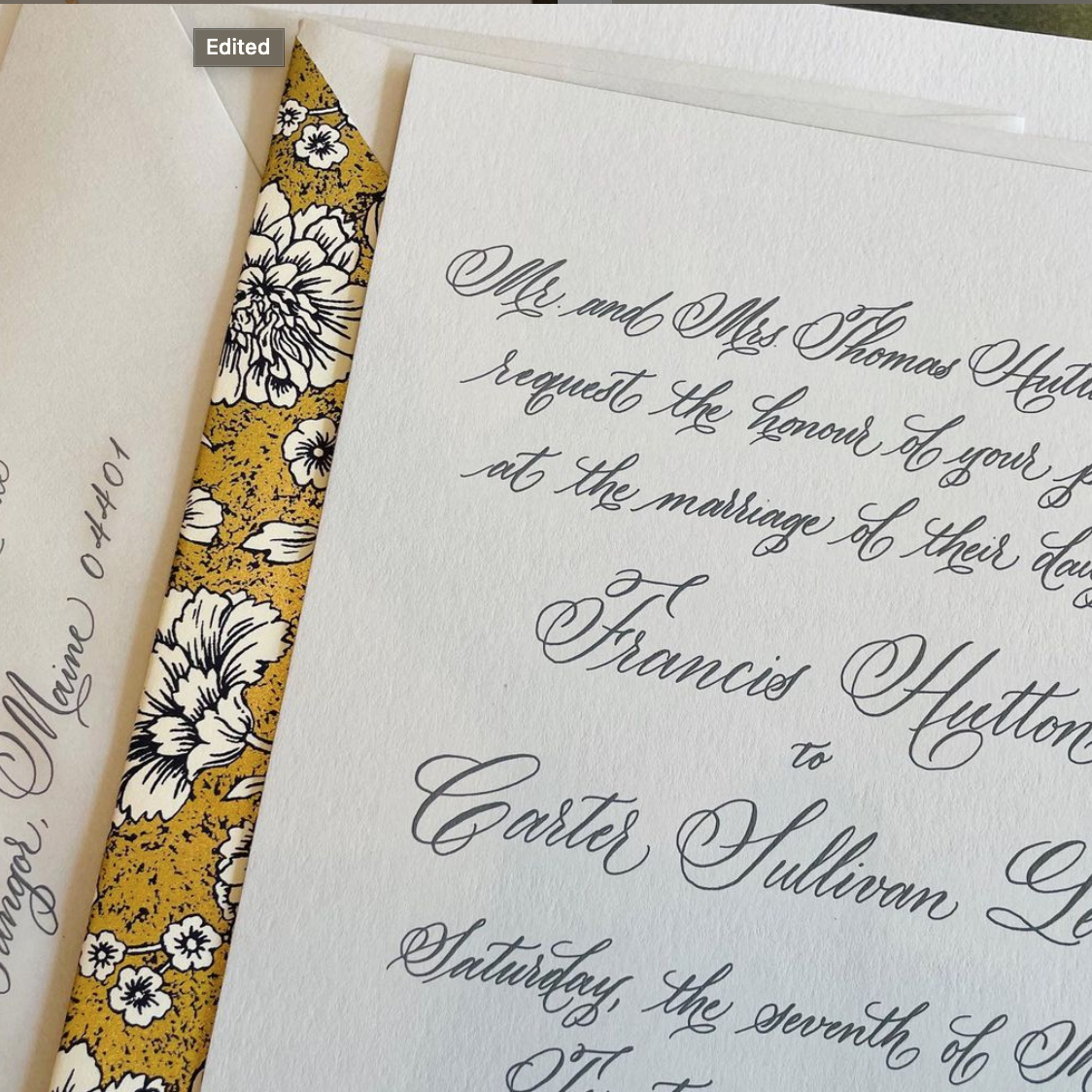
Why steel plating vs. plastic? “Metal plates are often used in commercial printing. For example, copper is the preferred plating for engravers. Metal plates must be used for foil embossing, which is one step further than engraving with ink. As for letterpress aside from foil debossing which requires the use of a copper plate, photopolymer or plastic plates are widely used.”
Why and how has this industry had to change to stay relevant? “As I say, it has been a journey. Many commercial print shops have especially reorganized in the past two years. Suppliers have reevaluated their products. Some have downsized; some have hired new staff and taken on extremely large and varied accounts. Locally we’ve lost some stationers, but I must say we have an astute group of customers in the area who recognize quality and workmanship; how a business card, a personalized note or a carefully crafted invitation represents them. I dare say with the nearly seven-hundred-year legacy of Johannes Gutenberg, we’re not in danger of losing this fine artisan and mannerly craft.”
Why do you love being in Shadyside?“I see people from around the world, from all walks of life. There are people who come in to chat or just to say hello, and I know immediately how passionate they are about all things paper.”
If you want to say hello to Sara, Scribe’s grand anniversary 10-year celebration runs from Saturday, Oct. 9 through Saturday, Oct. 16. Expect giveaways, raffles and educational talks!
Visit scribepgh.com for more details!

Leave A Comment